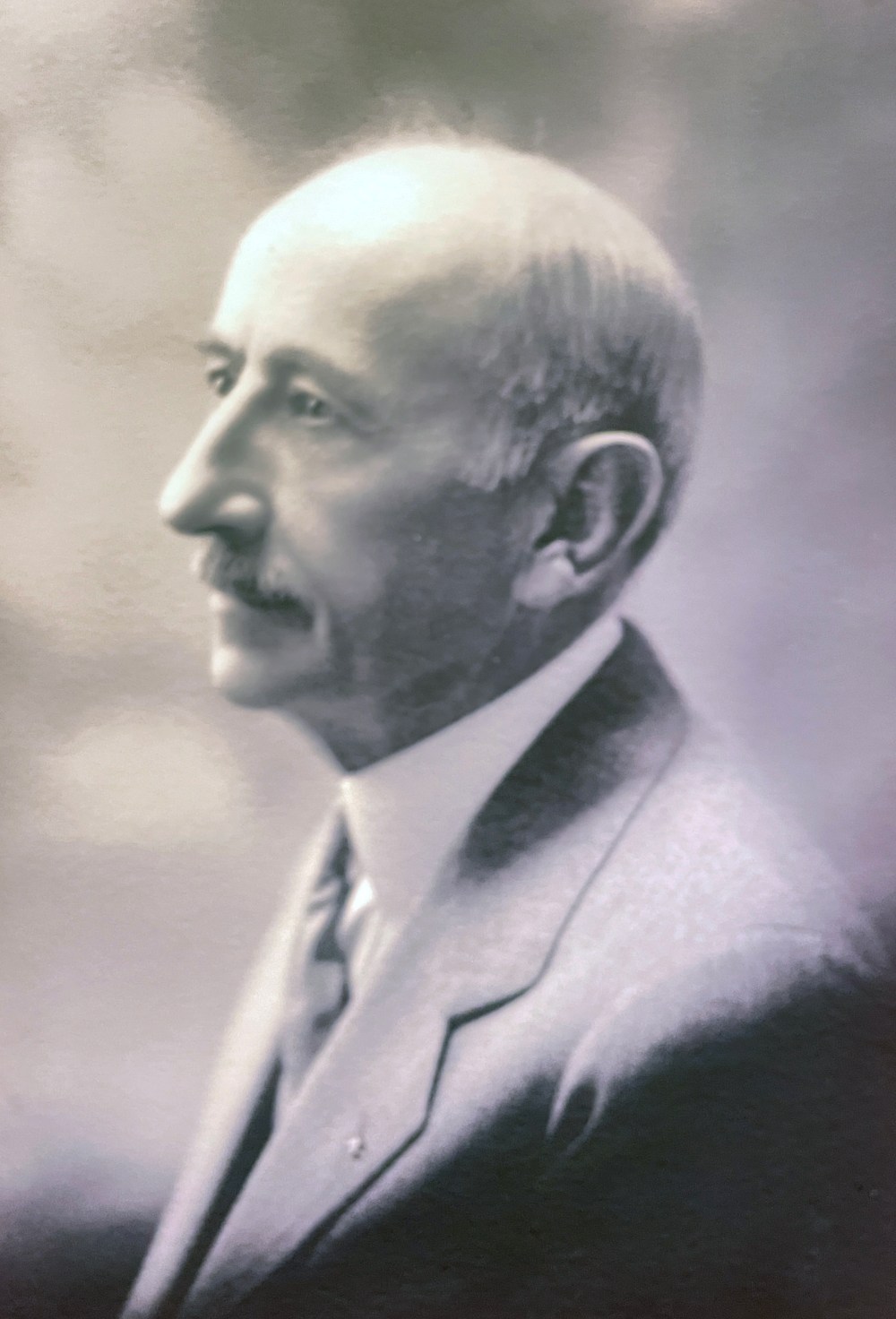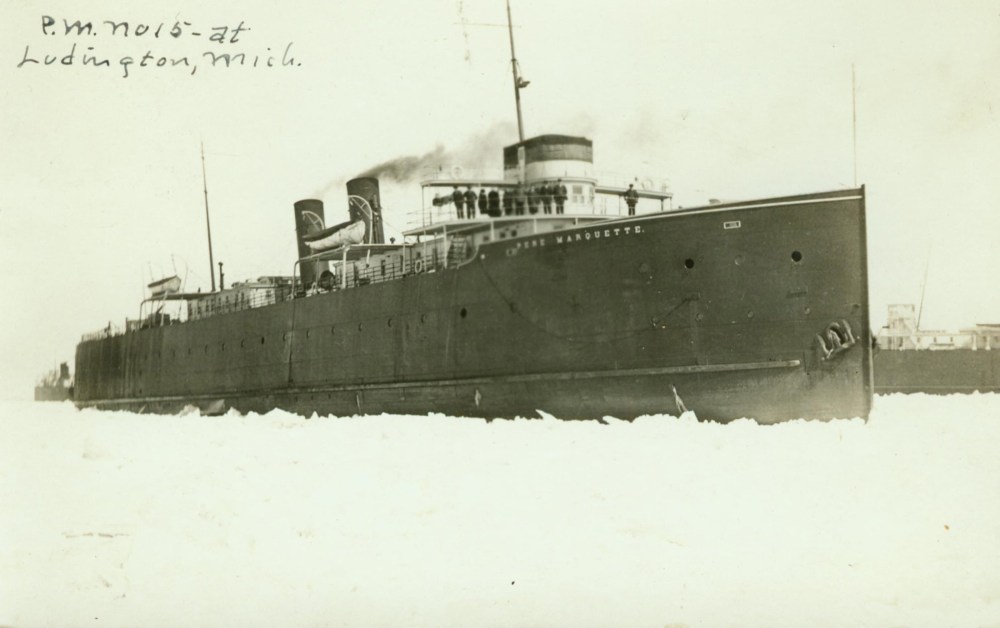William Mercereau, the father of the Ludington carferry fleet

By Rob Alway
William Lincoln Mercereau served as the superintendent of the Pere Marquette Railway carferries for 31 years. He was born on June 9, 1866 in Union, New York, the son of Seymour and Mary Mercereau. According to his obituary, published on June 24, 1957 in the Ludington Daily News, he spent some of his youth in Montana and Idaho. He then obtained a job as a locomotive fireman working for the Flint & Pere Marquette Railway. Census records show him living in Saginaw in 1887, which was the base of the F&PM.
After a year and a half in that job, he moved to Ludington and became a purser on the F&PM break-bulk freighters based in Ludington, which began service in 1875, a year after the F&PM arrived in Ludington, its eastern terminus.

William Mercereau
“He remained in this service for a few years, then went to St. Louis, Mo., to augment his education,” his obituary read. “There he was graduated from a business college, after which he returned to Saginaw as a special assistant in the F&PM general office.”
In August, 1898, Mercereau was ordered to Ludington on a special assignment. A few weeks later he was named superintendent of the carferry operations.
William Mercereau married Lulu May Timberlake (1872-1955) on July 14, 1894 in Cook County, Ill. They did not have any children.
“Carferrying on Lake Michigan was just emerging and, whether it would become a success, was problematic. Much opposition was in evidence, because of the transition from break-bulk steamers, with their large crews of freight handlers on land, to the new type ships by means of which freight cars were ferried bodily across Lake Michigan without need of transferring their contents.
“The Pere Marquette had been operating a fleet of package and grain steamers out of Ludington to Wisconsin ports since 1882. The package steamers, it was felt, were on their way out, to be replaced by the modern carferry idea. One carferry, the Pere Marquette, later known as the No. 15, had been built and placed in service the year before, in 1897.
“Sensing that one carferry was insufficient to handle the growing volume of freight, Mr. Mercereau threw his effort behind the carferry idea.

Pere Marquette 15, the first Ludington carferry.
“In 1900 a new ship, the No. 17, was built, differing from the No. 15 chiefly in the matter of more cabin accommodations. This part of the ship was planned entirely by Mr. Mercereau. Meanwhile, in the same year, through a railway consolidation, a third ship, the carferry Muskegon, later named the No. 16, was acquired.

William Mercereau
“Business continued to grow, and, in 1902, the No. 18 was built. In 1903 came the No. 19 and the No. 20.
“Twenty-one years later, in 1924, the No. 21 and the No. 22 were built, and in 1929 and 1930 came the two turbo-electric carferries, the City of Saginaw 31 and the City of Flint 32.
“In addition, powerful river carferries were built for use across Detroit River, their construction and operation also coming under Mr. Mercereau’s management.
“The No. 18, only Pere Marquette ship ever to sink, was replaced a year later by a new ship of the same number (in 1911).
“All of these carferries, except the No. 15 and No. 16, were the product of Mr. Mercereau’s unusual genius as a marine operator.
“It was his almost single-handed persistence which brought Ludington its present million dollar harbor development with protecting breakwater arms and other facilities which today make it one of the finest harbors on Lake Michigan.”
Mercereau was named manager of all Lake Michigan carferry services when the federal government took over all the operations during World War I, which was relinquished in 1920.
In 1931, Mercereau retired due to failing eye sight. That same year he and Lulu moved to Dunedin, Fla. near Clearwater where they remained the rest of their lives, coming back to Ludington to visit in the summers.
Lulu died in 1955 and William died on June 22, 1957 at the age of 91. They are buried at Sylvan Abbey Memorial Park in Clearwater, Fla.
Rob Alway is Outside Marketing Representative for Lake Michigan Carferry and is also the Editor-in-Chief of Mason County Press in Scottville, Mich. He also serves on the Board of Directors of the Mason County Historical Society, in which much of the research from this article came from. The Mason County Historical Society owns and operates the Port of Ludington Maritime Museum along with the Rose Hawley Archives in downtown Ludington and Historic White Pine Village, south of Ludington in Pere Marquette Township.
The 2025 Sailing Season begins May 16!

